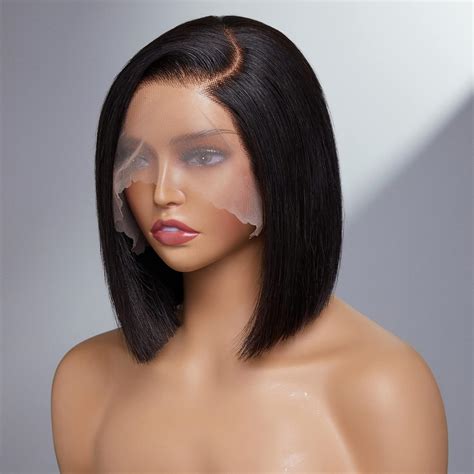Table of Contents
- Benefits of Wigs & Extensions
- Types of Wigs and Extensions
- Choosing the Right Option
- Installation and Maintenance
- Tips for Natural-Looking Results
- Common Mistakes to Avoid
Benefits of Wigs & Hair Extensions
- Versatile: Enhance your style, experiment with colors, add volume, or camouflage hair loss.
- Confidence-Boosting: Achieve your desired hair without damaging your natural locks.
- Time-Saving: Get instant transformations without the hassle of lengthy salon appointments.
- Protective: Shield your hair from heat styling, chemical treatments, and environmental damage.
- Cost-Effective: Long-term savings compared to ongoing hair appointments and products.
Types of Wigs and Extensions
Wigs

- Lace Wigs: Mimic the natural scalp with a transparent lace base, offering realistic partings.
- Monofilament Wigs: Thin, flexible base for a lightweight, undetectable appearance.
- Full Lace Wigs: Cover the entire head for maximum versatility and customization.
- 360 Lace Wigs: Lace around the perimeter, allowing for high ponytails and updos.
- Synthetic Wigs: Durable and affordable, various colors and styles available.
Hair Extensions
- Clip-In Extensions: Temporary clips allow for easy attachment and removal.
- Tape-In Extensions: Adhesive bonds secure extensions directly to your hair.
- Fusion Extensions: Keratin bonds attach extensions to individual strands, creating a permanent effect.
- Sew-In Extensions: Wefts are sewn into your braids for a semi-permanent solution.
- Micro-Loop Extensions: Small, beaded loops connect extensions to your hair, resulting in less damage.
Choosing the Right Option
- Consider your hair type, texture, and density.
- Determine your desired style and coverage.
- Research different materials and construction methods.
- Consult with a professional hairstylist.
Installation and Maintenance
Wigs
- Wig Cap: Use a wig cap to create a smooth surface and prevent slippage.
- Styling: Use heat-resistant tools and avoid excessive heat styling.
- Cleaning: Wash gently with lukewarm water and wig shampoo.
- Storage: Store in a cool, dry place, on a wig stand or in a box.
Hair Extensions
- Proper Application: Follow specific application methods for each type of extension.
- Blending: Blend extensions with your natural hair to create a seamless transition.
- Styling: Handle extensions with care when brushing, styling, and sleeping.
- Maintenance: Regular touch-ups and professional removal are necessary for upkeep.
Tips for Natural-Looking Results
- Match your hair texture: Avoid drastic differences in texture between extensions and your hair.
- Choose a suitable color: Select a color that complements your skin tone and hair color.
- Layer extensions: Combine shorter and longer extensions to create depth and volume.
- Cut and style: Have extensions cut and styled by a professional to blend seamlessly.
- Use minimal products: Avoid using styling products that can weigh down extensions.
Common Mistakes to Avoid
- Choosing the wrong size: Improper sizing can lead to discomfort and an unnatural appearance.
- Over-styling: Excessive heat styling can damage extensions and reduce longevity.
- Sleeping with wet extensions: Moisture can cause tangles and matting.
- Ignoring maintenance: Neglecting regular care can shorten the lifespan of extensions.
- Using harsh chemicals: Avoid chemical treatments that can damage or discolor extensions.
Conclusion
Wigs and hair extensions offer countless benefits, from enhancing your style to protecting your natural hair. By understanding the different types, choosing the right option, and following proper installation and maintenance techniques, you can achieve natural-looking results that boost your confidence and empower you to express your unique style.
Additional Resources:
- The International Hair Association
- The American Hair Loss Association
- The National Hairdressers’ Federation
Disclaimer: The information provided in this article is for general knowledge and informational purposes only. It is not intended as medical advice or a substitute for professional consultation. Always seek the advice of a qualified healthcare provider with any questions you may have regarding your hair or scalp.
